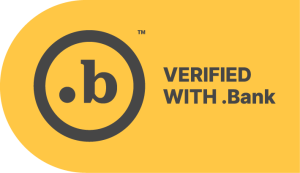If you earned quantifiable interest on your savings or investments in the previous calendar year, be on the lookout for IRS Form 1099-INT in the run-up to Tax Day.
As the holiday season fades, businesses and individuals are confronted with a new year—and another round of wrangling all the necessary tax documents. January is a good time to dust off your checklist and take stock of what you need to properly file this year’s tax returns.
If you earned more than $10 in interest income from savings accounts or investments last year, you’ll receive a Form 1099-INT from the bank, financial institution or government agency holding the money. It essentially tells the Internal Revenue Service you earned some interest that may be (sigh) taxable. Reporting interest income to Uncle Sam isn’t optional.
So what exactly is the 1099-INT form? What are you supposed to do with it? And what happens if you earned interest but never received the form? We have the answers. Read on to learn all about this important form and how it influences your annual tax return and potentially your refund.
What is a 1099-INT?
The IRS Form 1099 is a mechanism for the federal government to track the types of income earned by taxpayers. There are more than 20 versions of the form. Form 1099-INT is issued when you earn more than $10 in interest in a calendar year.
That interest could come from a savings account or certificates of deposit at your local bank. U.S. savings and treasury bonds, as well as mutual funds, are other investments that might generate annual interest that goes in your pocket. Well, most of it, anyway.
Interest income is taxed at the same rate as ordinary income. So if your income tax rate is 35% based on your household income, then any interest income you earn will also be taxed at that rate. In this scenario, if you made $50 in interest on your high-yield CD, $17.50 would go to the IRS.
So when do you get a Form 1099-INT? Banks and brokerage firms must mail these forms to you by January 31 each year and file a copy with the IRS. The straightforward form, which includes your Social Security Number and Taxpayer Identification Number, has a dedicated box near the top for your interest income—a figure you’ll need to carry over to your tax return.
What do I do with a Form 1099-INT?
As noted above, the information contained in your Form 1099-INT will need to be included in your tax return, but you’ll want to keep the form itself for your records. Even though financial institutions send a copy to the IRS, you’re still responsible for reporting interest income when you file.
There are several boxes on a Form 1099-INT. In addition to listing the total amount of interest income you earned, there are spots to denote penalties for withdrawing funds prior to a maturity date and interest you earned on U.S. savings bonds or Treasury notes. There are also fields for federal tax withheld by the payer or interest from investments with state or local governments, such as municipal bonds.
Be sure to include the sums from the 1099-INT boxes in the correct spots on your tax return. Consult a respected online resource like TurboTax or Jackson Hewitt for those what-goes-where specifics.
If you were fortunate enough to earn more than $1,500 in interest income last year, you’re rewarded with the prospect of filling out yet another IRS tax form—Schedule B (Form 1040). On this form, you simply list out the interest income from each Form 1099-INT you received—along with the payer—and tally up the total income. Three cheers for the tax code!
What should I do if I haven’t received a 1099-INT form?
That’s a great question. Whatever you do, don’t blow it off. The IRS expects you to report interest income regardless. Underreporting income could bring additional tax, interest and penalties. There are a few different options if you didn’t receive a 1099-INT from your bank or brokerage this year.
If you haven’t received a Form 1099-INT in the mail by mid-February, call your bank and let them know you’re still waiting. There may have been an administrative error, or it may have gotten lost in the mail. If you’re enrolled in online banking, check your account to make sure you don’t have an electronic copy of the IRS form.
Thankfully, you don’t need a Form 1099-INT to find last year’s interest income. If you’re unable to get your hands on the actual form, just consult year-end account statements. Look up how much interest you earned over the 12-month period and include that amount on your tax return.
And remember, just because you received a Form 1099-INT from the bank doesn’t necessarily mean it’s correct. Check the interest income listed on the form against your year-end statement for good measure. If you determine the amount on the form is wrong, contact your bank and request that they fix the error, then send you and the IRS a corrected copy.
Very few of us relish the annual tax-filing process, but look on the bright side: If you receive a Form 1099-INT, that means your money is earning money. Contact Community Point Bank today to learn about the many ways we help customers grow their assets!




